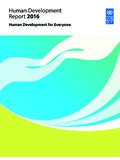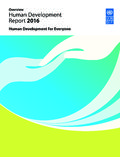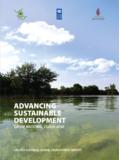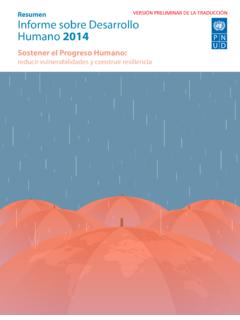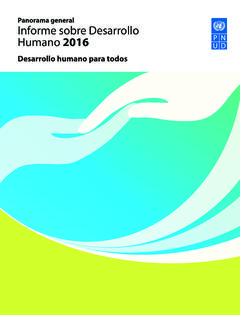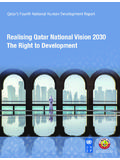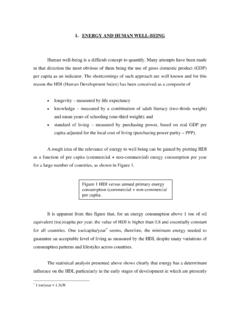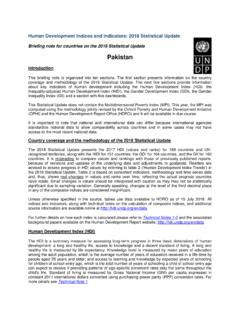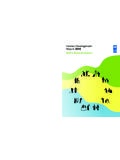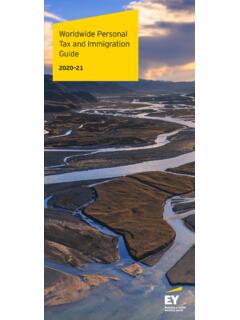Transcription of THE AFRICAN HUMAN RIGHTS SYSTEM A Critical Evaluation
1 1 THE AFRICAN HUMAN RIGHTS SYSTEM A Critical Evaluation Makau Mutua* I. Introduction The regional AFRICAN HUMAN RIGHTS SYSTEM is based on the AFRICAN Charter on HUMAN and Peoples RIGHTS (the AFRICAN or Banjul Charter),1 which entered into force on October 21, 1986, upon ratification by a simple majority of member states of the Organization of AFRICAN Unity (OAU).2 In June 1998, the OAU adopted the Protocol to the AFRICAN Charter on HUMAN and Peoples' RIGHTS on the Establishment of an AFRICAN Court on HUMAN and Peoples' The AFRICAN HUMAN RIGHTS Court is intended to complement4 the AFRICAN Commission on HUMAN and Peoples' RIGHTS , *Professor of Law, State University of New York at Buffalo Law School; Director, HUMAN RIGHTS center , SUNY Buffalo; Chair, Kenya HUMAN RIGHTS Commission; , (1987), Harvard Law School; , (1985), Harvard Law School.
2 , (1984), University of Dar-es-salaam; , (1983), University of Dar-es-salaam. 1 The AFRICAN Charter on HUMAN and Peoples RIGHTS , June 27, 1981, OAU Doc. CAB/LEG/67/3 (1981), reprinted in 21 59 (1982). 2 The AFRICAN Charter was adopted in 1981 by the 18th Assembly of Heads of State and Government of the OAU, the official body of AFRICAN states. It is also known as the Banjul Charter because a final draft of it was produced in Banjul, the capital of the Gambia. 3 Protocol to the AFRICAN Charter on HUMAN and Peoples' RIGHTS on the Establishment of an AFRICAN Court on HUMAN and Peoples' RIGHTS , Assembly of Heads of State and Government of the Organization of AFRICAN Unity, Ougadougou, Burkina Faso, June 1998, OAU/LEG/MIN/AFCHPR/PROT.
3 (1) [hereinafter Protocol]. See also AFRICAN Foreign Ministers Discuss HUMAN RIGHTS , Africa News, April 15, 1999, available in LEXIS, News Library, CURNWS File. 4 The Protocol shall enter into force thirty days after ratification by fifteen OAU member states. Protocol, supra note 3, article 34. Although by April 1999 the Protocol had been signed by 30 states, only two, Burkina Faso and Senegal, had ratified it. See AFRICAN HUMAN RIGHTS Commission Session Opens, Africa News, April 26, 1999, available in LEXIS, News 2 the body that has exercised continental oversight over HUMAN RIGHTS since The Protocol suggests that the AFRICAN HUMAN RIGHTS Court will make the promotion and the protection of HUMAN RIGHTS within the regional SYSTEM more But the mere addition of a court, although a significant development.
4 Is unlikely by itself to address sufficiently the normative and structural weaknesses that have plagued the AFRICAN HUMAN RIGHTS SYSTEM since its inception. The modern AFRICAN state is in many respects the colonial in a different guise. The AFRICAN state has been such an egregious HUMAN RIGHTS violator that skepticism about its ability to create an effective regional HUMAN RIGHTS SYSTEM is Library, CURNWS File. The Protocol states in the preamble that the AFRICAN HUMAN RIGHTS Court shall "complement and reinforce the functions of the AFRICAN Commission on HUMAN and Peoples' RIGHTS .
5 " See preamble, Protocol, supra note 3. Elsewhere, the Protocol clarifies and emphasizes that the AFRICAN HUMAN RIGHTS Court shall "complement the protective mandate of the AFRICAN Commission on HUMAN and Peoples' RIGHTS ." Id., article 2. See also Gino J. Naldi & Konstantinos Magliveras, Reinforcing the AFRICAN SYSTEM of HUMAN RIGHTS : The Protocol for the Establishment of an AFRICAN Court of HUMAN and Peoples RIGHTS , 16 Neth. Q. Hum. Rts. 431 (1998); U. Oji Umozurike, The AFRICAN Charter on HUMAN and Peoples RIGHTS 92-3 (1997). 5 Until the Protocol comes into force and a HUMAN RIGHTS Court is established, the AFRICAN Commission on HUMAN and Peoples' RIGHTS [hereafter AFRICAN Commission] will remain the sole supervisory organ for the implementation of the AFRICAN Charter on HUMAN and Peoples' RIGHTS .
6 6 See generally preamble, Protocol, supra note 3. 7 For discussions and analyses of the colonial imprint on the AFRICAN post-colonial state, see Mahmood Mamdani, Citizen and Subject: Contemporary Africa and the Legacy of Late Colonialism (1996); Crawford Young, "The Heritage of Colonialism," in Africa in World Politics 19 (John W. Harbeson & Donald Rothschild, eds., 1991); Robert H. Jackson, "Juridical Statehood in Sub-Saharan Africa," 46 J. Int'l Aff. 1 (1992); Ali A. Mazrui, "The AFRICAN State as a Political Refugee: Institutional Collapse and HUMAN Displacement," Int'l J.
7 Refugee L., Special Issue, July 1995, at 21; Makau wa Mutua, "Why Redraw the Map of Africa: a Moral and Legal Inquiry," 16 Mich. J. Int'l L. 1113 (1995). Discussing Africa's colonial legacy, one author notes that the "[m]ost obvious and powerful expressions of the continued AFRICAN conceptual reliance on European political forms are the AFRICAN 3 Although the Banjul Charter makes a significant contribution to the HUMAN RIGHTS corpus, it creates an ineffectual enforcement SYSTEM . Its most notable contributions are the codification of the three "generations" of RIGHTS , including the innovative concept of peoples' RIGHTS , and the imposition of duties on But many commentators have focused on the weaknesses in the AFRICAN SYSTEM .
8 These include the "clawback" clauses in the AFRICAN Charter, the potential abuse of the language of duties, and the absence of an effective protection mandate for the AFRICAN Recent changes in the AFRICAN state, particularly those related to demands for more open political societies, may augur well for the protection of civil and political Emergent democracies such as namibia , Malawi, Benin, South Africa, Tanzania, and Mali are more inclined than their predecessors to respect HUMAN RIGHTS at home, and to agree to a more viable regional SYSTEM .
9 In this context, the AFRICAN HUMAN RIGHTS Court is likely to operate states themselves. The states are direct and uncritical successors of the colonies." See Art Hansen, " AFRICAN Refugees: Defining and Defending HUMAN RIGHTS ," in HUMAN RIGHTS and Governance in Africa 139, 161 (Ronald Cohen, Goran Hyden, & Winston Nagan, eds., 1993). 8On duties on the individual, see arts. 27-29, AFRICAN Charter, supra note 1. For a discussion of the concept of duties in HUMAN RIGHTS discourse and the AFRICAN Charter, see Makau wa Mutua, "The Banjul Charter and the AFRICAN Cultural Fingerprint: an Evaluation of the Language of Duties," 35 Va.
10 J. Int'l L. 339 (1995). 9 For discussions of these problems, see Richard Gittleman, "The AFRICAN Charter on HUMAN and Peoples' RIGHTS : a Legal Analysis," 22 Va. J. Int'l L. 667 (1982); Richard Gittleman, "The AFRICAN Commission on HUMAN and Peoples' RIGHTS : Prospects and Procedures," in Guide to International HUMAN RIGHTS Practice 153 (Hurst Hannum, ed., 1984); Cees Flinterman & Evelyn Ankumah, "The AFRICAN Charter on HUMAN and Peoples' RIGHTS ," in Guide to International HUMAN RIGHTS Practice 159 (Hurst Hannum, ed., 1992). 10 See Makau wa Mutua, " AFRICAN Renaissance," New York Times, May 11, 1991 (describing the demands by Africans for political democracy); HUMAN RIGHTS Watch, HUMAN RIGHTS Watch World Report 1993 (1992), at 6-9 (reporting Africa's political upheavals, including those related to demands for political reforms and democracy).
